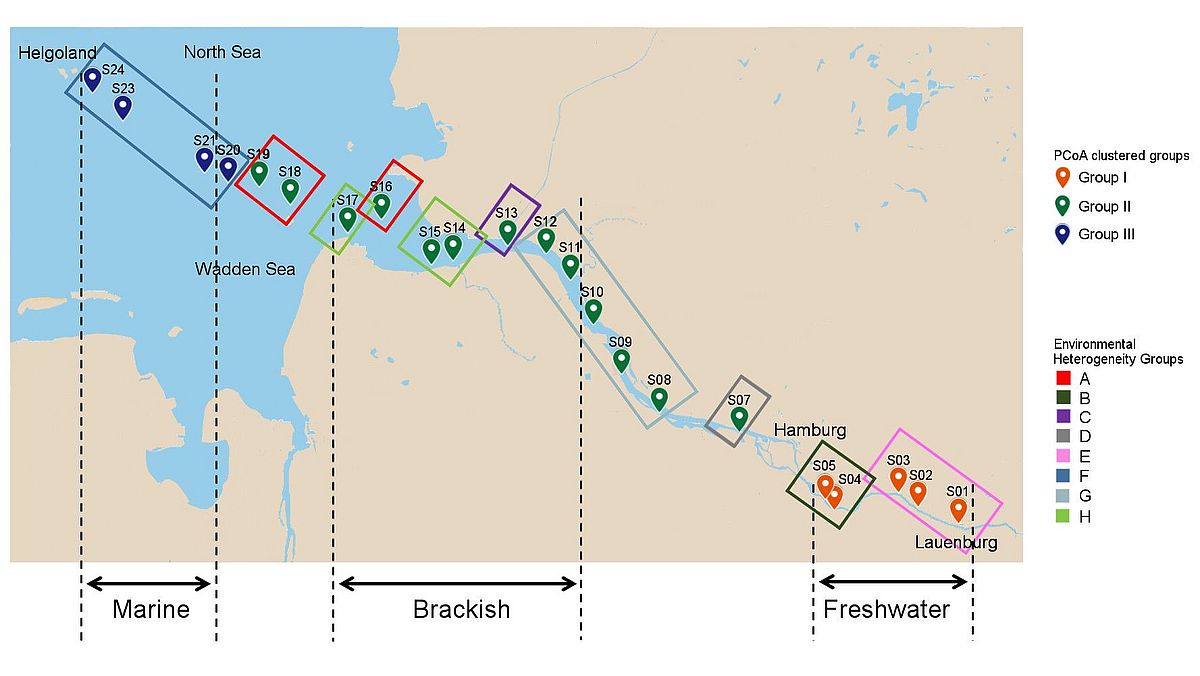In most cases, the samples taken on a cruise must be further processed directly on the research vessel. Here, water samples are filtered to obtain the biomass.
Molecular Ecology
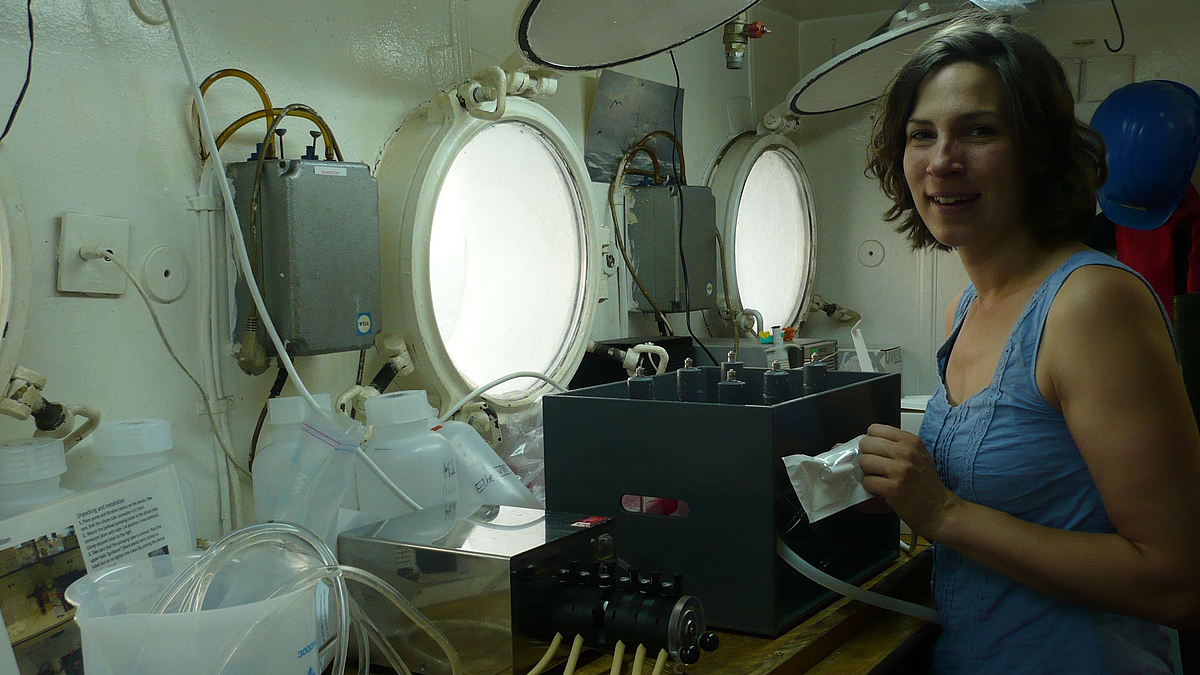
Sampling on a research vessel
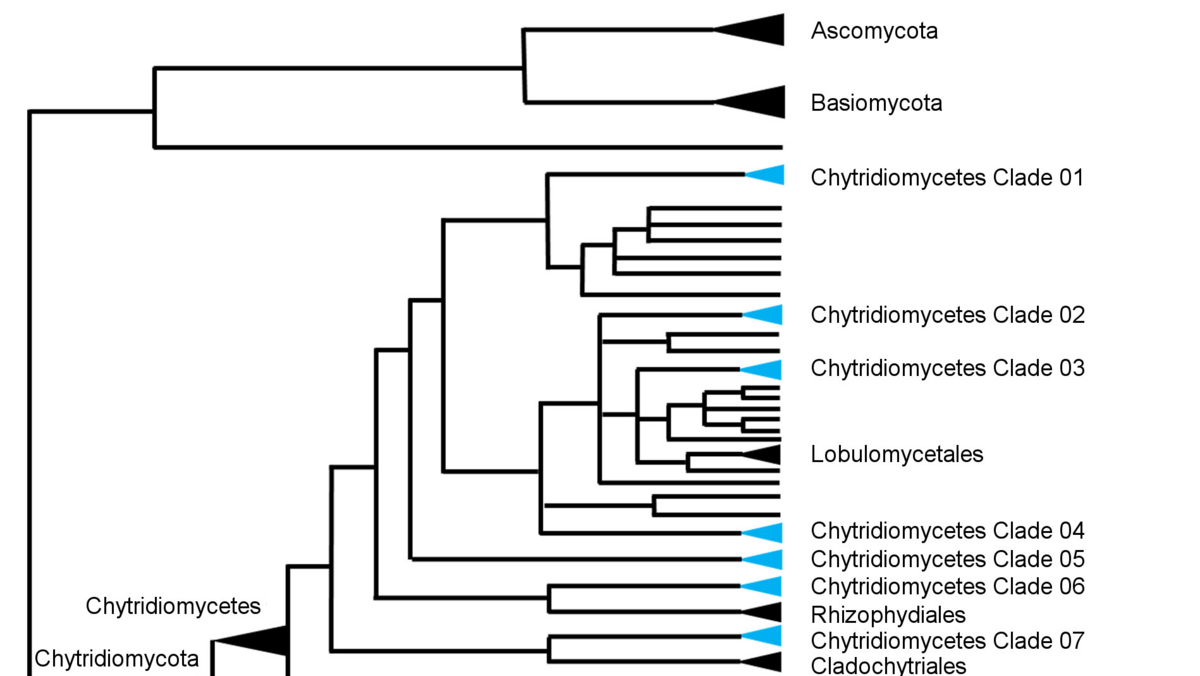
Phylogenetic trees
Phylogenetic trees are used to classify taxonomically unknown fungal species and to identify and explore evolutionary developments within fungi.
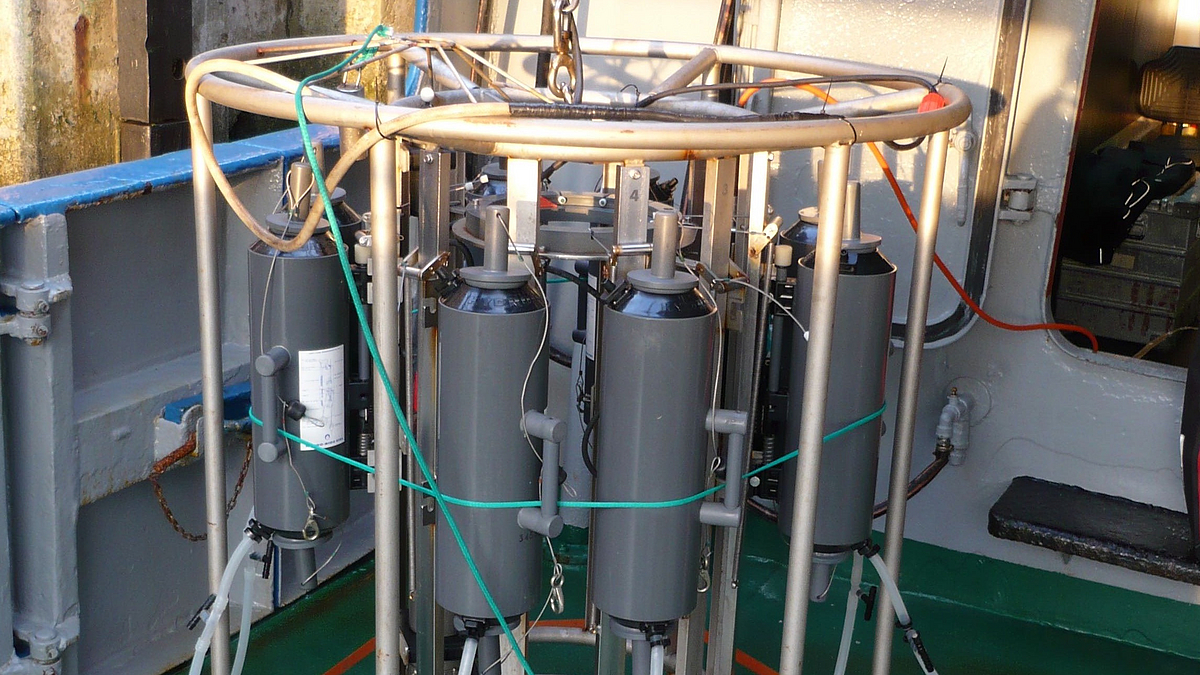
Water sampler
A rosette of Niskin bottles (water sampler) can be used to take numerous water samples at once from clearly defined depths in the ocean. A CTD instrument is incorporated into the rosette that measures salinity, pressure, and temperature at the sample depth.

Network analysis
Network analyses are statistical analyses that help identify and display possible interactions and symbiotic networks in microbial communities.
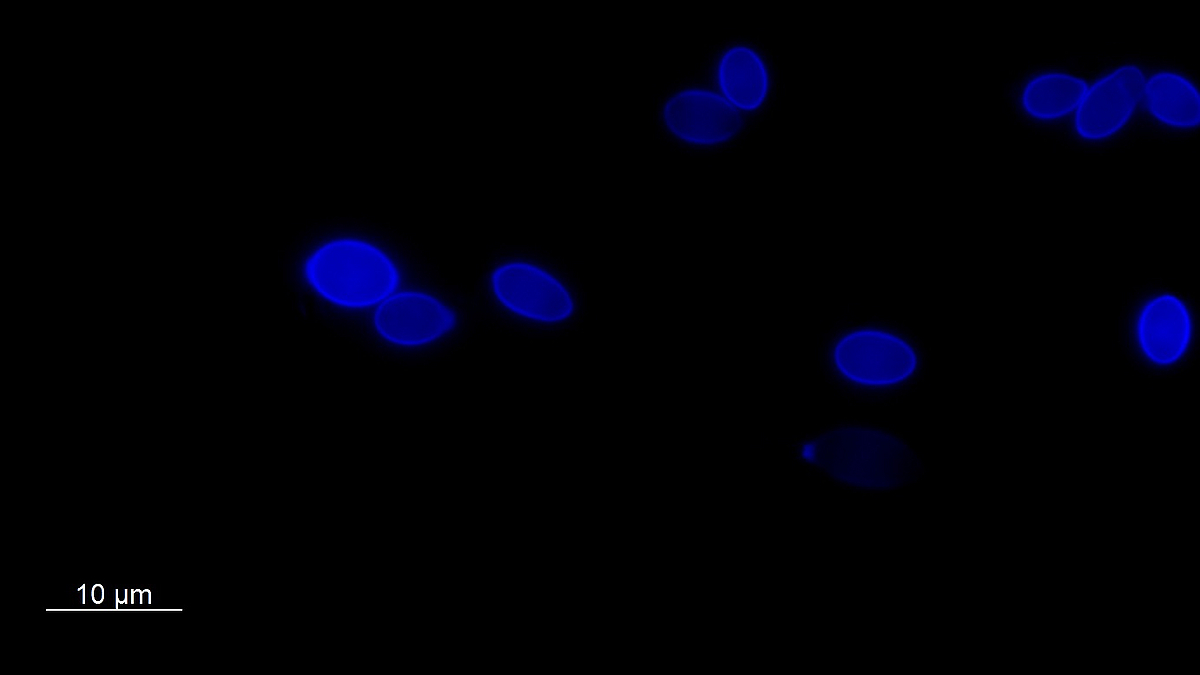
Yeast cells stained with fluorescent dye
Direct staining of the fungi in the environmental sample is of great importance, as this gains knowledge about their morphological appearance, biomass and interactions partners.

Marine fungal culture
The photo shows a fungus that was isolated from oceanic surface water.
Isolation of fungi out of environmental samples allows to study fungal biology in more detail such as substrate-dependent growth or interactions with other organisms.
Contact
Dr. Marlis Reich
building UFT, room 2130
phone: +49-(0)421-218 62825
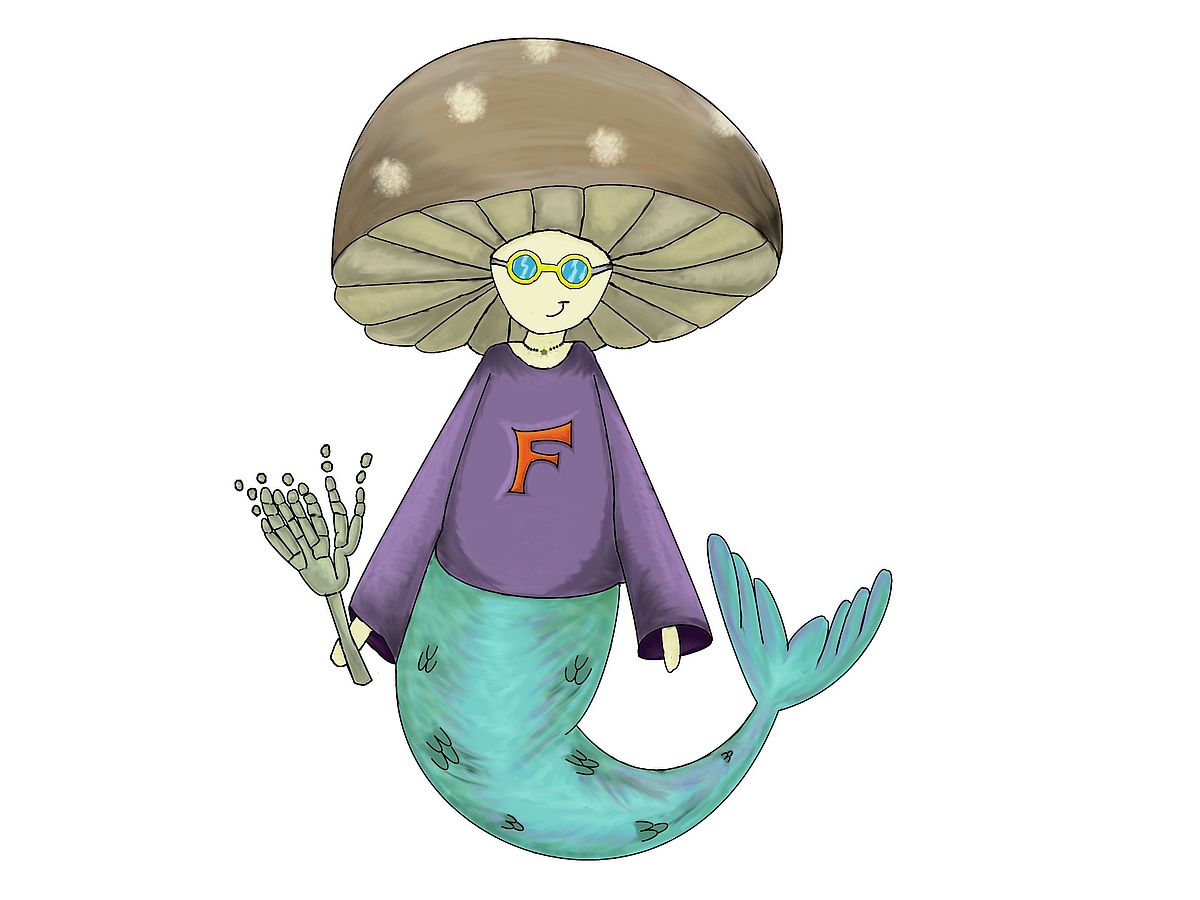
The oceans play critical roles in supporting human well-being and nutrition, e.g. more than 3.5 billion people depend on the ocean as their primary food source; oceans contribute to the Earth’s habitability by regulating the global climate and acting as global CO2 sink.
One reason for these oceanic services is the marine biological carbon pump: in simple terms, the carbon pump is the uptake of atmospheric carbon through photosynthesis and its subsequent formation into living organic matter passed on and distributed to all layers of the ocean.
Fish and humans are at the very end of the resulting food chain. The continuous flow of nutrients and organic matter in the biological carbon pump is based on the interaction of diverse organism groups. The first step of carbon fixation is mainly performed by phytoplankton while any further processing is done by microorganisms.
Surprisingly, marine fungi have so far been overlooked in the processes of the marine biological carbon pump although they are globally present in the oceans. Fungi possess unique features allowing to access diverse carbon sources and to establish manifold interactions. For example, parasitic fungi have the potential to breakdown phytoplankton blooms which essentially affects the rest of the carbon pump as shown for freshwater systems.
Under the scenario of climate change it is even more important to know all key players, their interactions and the resulting dynamic on the marine biological carbon pump. The focus of our research group is thus on the diversity and occurrence of marine fungi in surface water and their functional role within the marine carbon cycle.
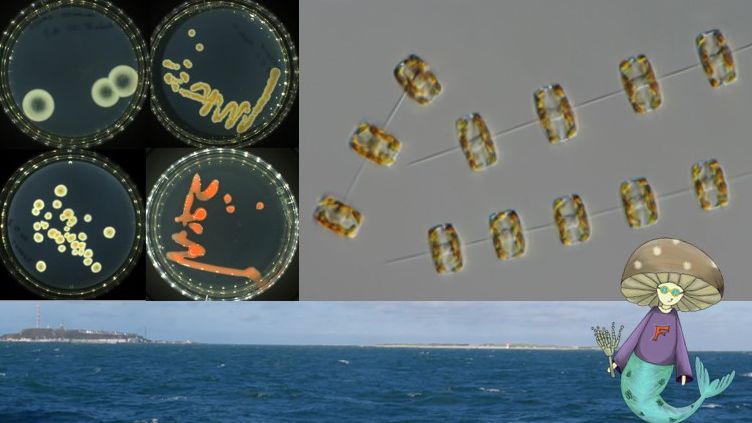
Open PhD position on Fungus-Phytoplankton-Interactions
Do fungi and phytoplankton interact?
Do they compete or help each other?
Interested? Apply for the open PhD position. Deadline: 28.02.2022!
more
Fungi in the Elbe River
High dynamics of assembly processes of aquatic fungi found in the Elbe River! Zoosporic fungi show habitat-specific distribution, but no group was marine-specific.
moreEcological relevance of marine fungi
Cell numbers of Rozellomycota OTUs reached values that are considered relevant for the mycoloop in freshwaters. Also the yeast-like fungi reached biomass values that can be considered ecologically relevant. The punctual increase in cell number was even larger than what has been described for bacteria during a phytoplankton bloom.
more

![[Translate to English:]](/fileadmin/user_upload/logo-moleco1500l.jpg)
![[Translate to English:]](/fileadmin/user_upload/logo-molecol-16-9.jpg)
